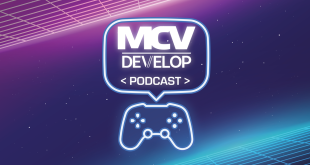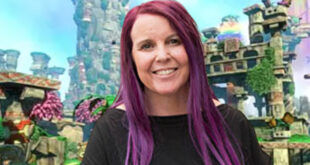There have never been more indie games on the market.
Free to use engines like Unity or Unreal, as well as software like GameMaker, mean that literally anybody with a computer and the will to make a video game can do just that. And thanks to open platforms like Steam and iOS, it’s easier than ever to put it out there.
The result is that the thriving indie market is reaching a saturation point.
There is just too much content, TinyBuild CEO Alex Nichiporchik tells MCV.
The market is flooded. It’s the same thing that happened with mobile years ago, and happens with any open market place.”
As a result of the sheer number of games, it’s become increasingly difficult to get visibility. Out of this, the idea of the ‘indieapocalypse’ has arisen – the notion that it’s never been harder to make and release indie games. But Team17’s Debbie Bestwick says that this is business as usual.
A lot of games are failing to achieve commercial and sustainable success,” she says.
That’s unfortunately always been a problem. There are a larger number of creators now, so we’re hearing more stories of doom and gloom. Throw in social media and it explodes. There are lots of incredibly successful indie games every year – significantly more now than five years ago.”
Rising Star developer relations man Martin Mathers adds: The indieapocalypse is a myth. It’s scare-mongering nonsense of the highest order. That’s not to say that there aren’t challenges. If you look at history, the indie thing was where everything started and then that became the big publishers. The indieapocalypse would suggest that indies are an endangered species and that is not the case. If anything, it’s the biggest studios that are endangered. You have this huge wave of creativity and amazing games coming up that prove you don’t need 5m and teams of 200 to make a good title.”
Devolver Digital’s Graeme Struthers says that there are challenges, but also plenty of tips for achieving success: There is a lot of good advice out there for developers. Vlambeer’s Rami Ismail is someone who puts a huge amount of effort into explaining the best way to approach being an indie developer. And whilst there is no ‘indieapocalypse’, there are many pitfalls for developers. As ever, speak to your peers, avoid received wisdom from industry experts and you should be fine.”
But Curve Digital’s publishing director Simon Byron says there is some truth to the indieapocalypse.
I’ve seen a lot of people be dismissive of it. And it’s easy to claim that the opportunities exist as they used to, but it’s clear that that’s not true,” he says.
The market changes so rapidly that what was true last year isn’t true now, and even what happened last month isn’t true now. What is clear is that old days where you could publish a game on Steam and sit back and collect the money, are long gone. Our first Steam game – Stealth Bastard – was the only game to come out that week. When Stealth Inc 2 launched last year, there were 24 other games out that day. In the old days you’d pinpoint a release date; now you need to pick a release hour so you have the best chance of taking off.”
(Above left to right): Team17’s Bestwick, Rising Star’s Mathers, Devolver’s Struthers and Curve’s Byron
As well as a rising number of games hitting storefronts, the cost of making games is rising. This has led to the rise of a new mid-tier, dubbed indie-A or triple-I by some.
Production values have been on the rise for about 18 months now,” Team17’s Bestwick says.
This comes at a real monetary cost. Developers need to feed families, pay bills. The more the consumers demand high production values, the higher the cost of games goes. It’s super competitive. But I like to think that people are starting to appreciate these games and what they are worth.”
505 Games’ global marketing boss Tim Woodley adds: Development costs are starting to rise again, which means that some of the bigger, more established studios are struggling to remain truly indie. Their size means that they need to be more ambitious with projects, bigger budgets, which means bigger unit forecasts.”
And Sold Out’s Garry Williams says that money is an issue in the sector: The indie scene is healthy but lacking in finance. The big have become bigger and aren’t interested in projects under x million.”
But this isn’t something that Devolver has encountered.
The scale and ambition of projects vary enormously and that has always been the case,” Struthers says. We still have a very similar range of projects today as we had several years ago and I don’t see that changing anytime soon. For each project it is more a case of being confident that the budgets are realistic in the first place and that the group can complete the game and not kill themselves in the process.”
With so many games launching right now, what exactly are indie publishers and labels looking for?
It has to be something that intrigues us and that we want to play,” Struthers says. There is clearly no set pattern to our group’s taste, given that we have moved from Pigeon dating simulators to katana-wielding ninjas.”
505’s Woodley adds: The reason why we’ve been so successful in the indie space is that this is where the risks are taken and where the innovation happens. When resources are tight, the concept has to do the heavy lifting. In this day and age, and particularly for indie studios, it is too risky not to take risks.”
Curve Digital’s acquisition by the Catalis Group in January has meant that the publisher has ramped up what it is looking for.
Historically, Curve didn’t have a huge amount of money in helping people finish games and what the Catalis acquisition has done is help us to compete in that new, more expensive indie market and allow us to sign those titles that are raising expectations of what an indie game can be,” Byron explains. Previously Curve would have struggled to compete in that market. But now, we are able invest in titles that need funding. You’re going to continue to see the evolution of Curve. The likes
of Action Henk and Hue are moving away from what was considered to have been a typical Curve game.”
PC-focused publisher Kiss is also looking to expand its offering.
We’ve called our new step Kiss 2.0 because it is a real change,” CEO Darryl Still says. We’re looking for cross platform, we’re looking for bigger titles with a stronger background, more depth, higher SRP and a longer lead time.”
He continues: Now developers really have to do the background work and you have to treat it like a triple-A coming from Activision or EA. They can’t say ‘it’s indie so we can do it in a very amateur way’. You still have to be slick and professional about it. In fact, you need to be more slick and professional about it than the slick professionals are.”
And TinyBuild’s Nichiporchik says that its games need to be able to be sold on social media.
There’s a new generation of gamers growing up very connected and constantly online,” he says. Now we are looking for something that can grab people’s attention quite easily. The latest example is Clustertruck. You see a gif

 MCV/DEVELOP News, events, research and jobs from the games industry
MCV/DEVELOP News, events, research and jobs from the games industry



